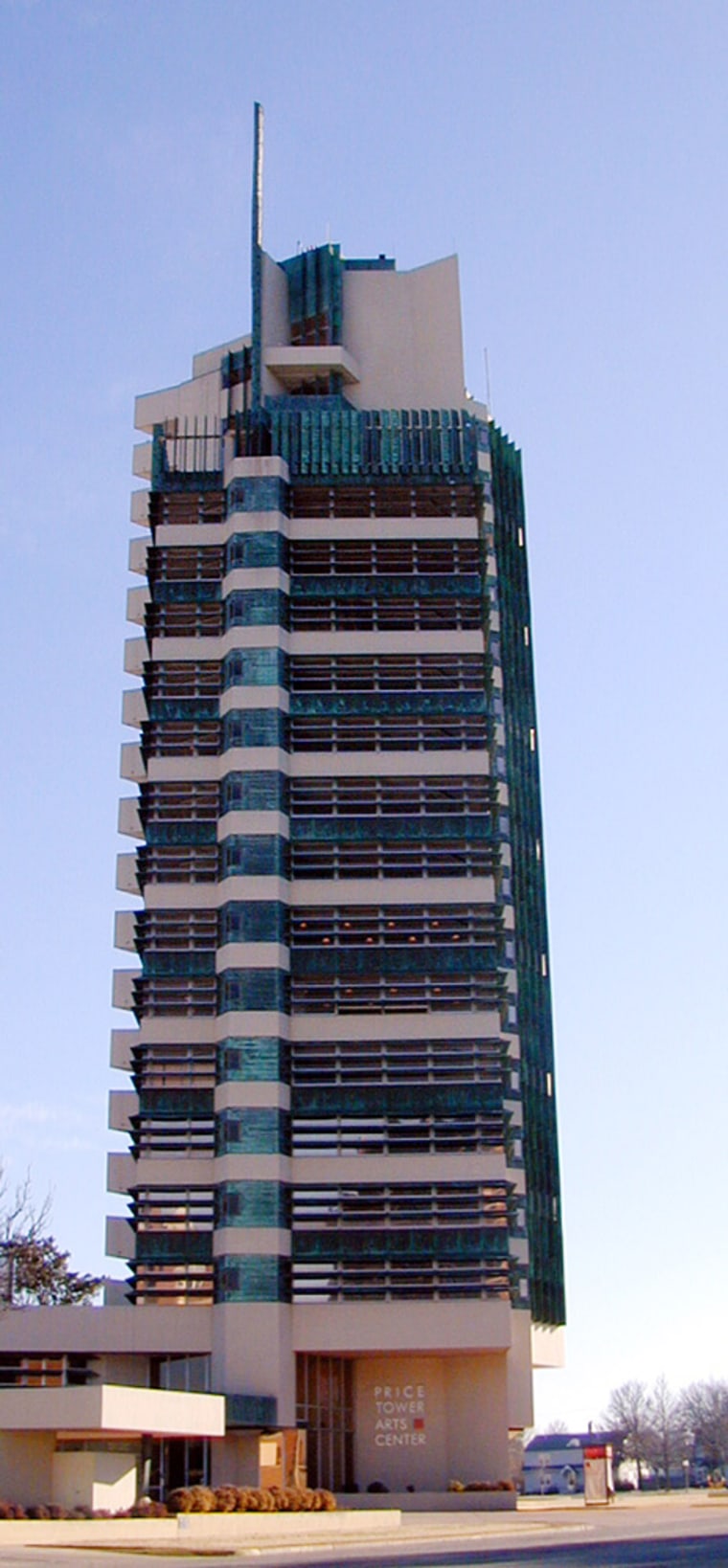The Price Tower, a 19-story building in Bartlesville, Okla., designed by famed architect Frank Lloyd Wright, has been designated a National Historic Landmark.
Fewer than 2,500 historic places in the United States bear the National Historic Landmark designation, the highest such recognition accorded by the federal government to historic properties.
The Price Tower houses a hotel, restaurant, retail stores, a museum and an arts center with a collection that includes a number of Wright designs. Tours of the building are offered six days a week.
The landmark designation comes during Oklahoma's centennial year. Interior Secretary Dirk Kempthorne announced the landmark designation for Price Tower and 11 other sites in 10 states on April 4.
Scott Perkins, the curator of collections and exhibitions at Price Tower Art Center, said he had worked on the application for historic designation since January 2006.
"For us, it means that this building is guaranteed its rightful place in American architectural history," Perkins said. "There's this recognition and designation so that we can say with pride that somebody else feels the same way we do about it."
Bartlesville businessman Harold C. Price Sr. commissioned Wright to design an office building for his oil pipeline company. The skyscraper cost $2.4 million - about $18 million in today's dollars - and took three years to build. It opened in 1956 and is considered, by Wright's own definition, to be his only skyscraper, Perkins said.
Its location in Bartlesville, a northeastern Oklahoma town of about 35,000 people with few tall buildings, also makes the structure unique.
The Price Tower's 19 floors stretch out from a central core, like the branches of a tree. The tower's floors and walls project from four vertical shafts of reinforced concrete, allowing for the division of the building into four quadrants. The building's exterior walls are not structural; instead, they are screens that rest on the cantilevered floors. All the structural support is in the center of the building, Perkins said.
Wright originally designed the tower to be an apartment building in the New York borough of Manhattan, but the economic depression of the 1930s scuttled those plans, Perkins said.
Wright referred to the building as a lone tree escaped from the forest and envisioned it as a multi-use facility that would be equally divided between residential and commercial spaces. According to the Interior Department, the building "embodies the powerful architectural idea of the cantilevered tower" and "acknowledges the relationship between American corporate identity and tall-building architecture."
Tadao Ando, the Japanese architect who won the Pritzker prize for architecture in 1995, called the Price Tower one of the most important buildings of the century.
"What an honor it is for us, that during the centennial celebration of Oklahoma's statehood, we have been designated as Oklahoma's 20th such historic property," said C.J. "Pete" Silas, the chairman of the board of trustees for Price Tower Arts Center. "The Bartlesville community's support and recent recognition of Price Tower Arts Center's contributions in developing, enhancing, and promoting this architectural icon of international significance has now been nationally validated."
Two other buildings designed by Wright also were designated as National Historic Landmarks on April 4 - the Hollyhock House at the Aline Barnsdall Complex in Los Angeles and the Beth Sholom Synagogue in Elkins Park, Pa.
The other newly designated landmarks are the Naumkeag country estate in Stockbridge, Mass.; a row of restored colonial houses in Salem, Mass., called the House of Seven Gables District; Field House in St. Louis, Mo., home of a lawyer who worked on the Dred Scott case; the village of Mariemont, Ohio, a model for Garden City design; Washington Place, Honolulu, where Queen Lili'oukalani lived; the Central Utah Relocation Center Site in Utah, an internment camp for Japanese-Americans during World War II; Fig Island near Charleston, S.C., the site of shell mounds created by indigenous groups 3,000 to 5,000 years ago; Spring Grove Cemetery, Cincinnati, a model for 19th century landscaped graveyards; and the Hegeler-Carus Mansion, LaSalle, Ill., a 57-room 1870s mansion.
"These new National Historic Landmarks reflect some of the most important historical and cultural developments in American history," Kempthorne said in a statement. "Each of them tells a story about us as a nation and a people. Together they exemplify our history, heritage, literature and architecture."
